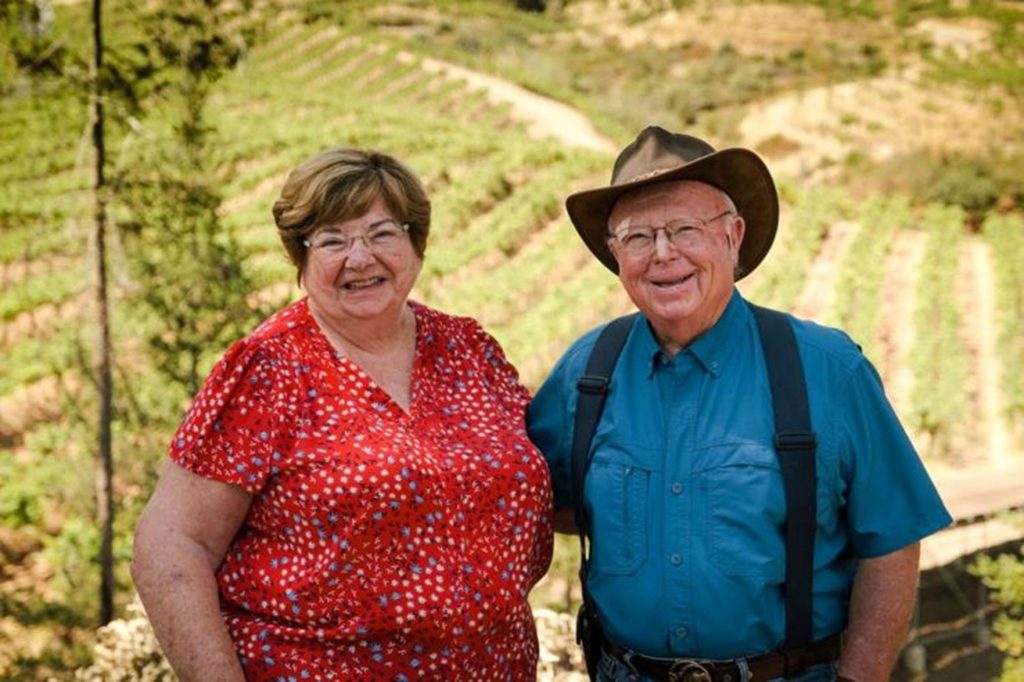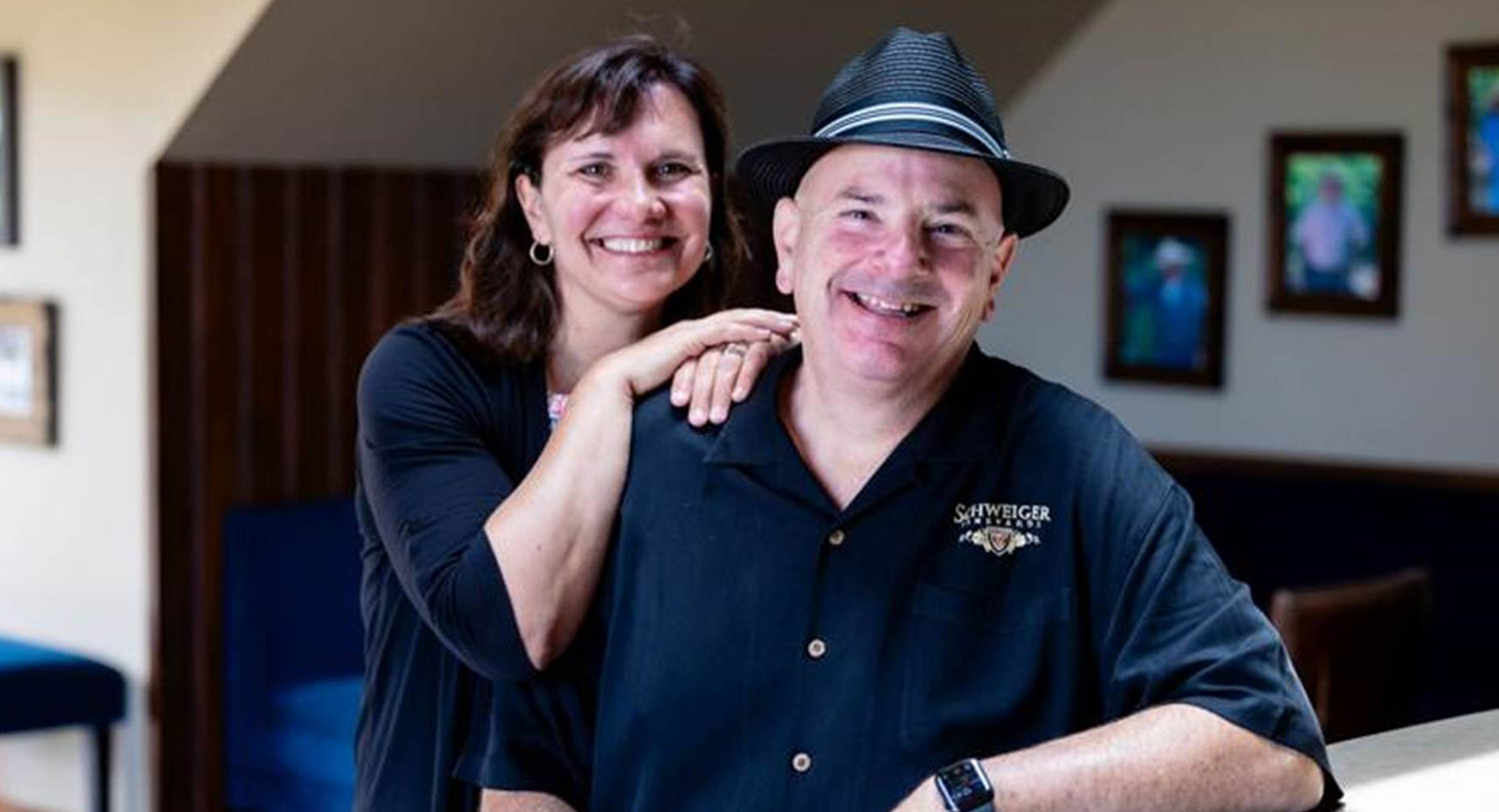Originally published in the St. Helena Star
When was your winery founded?
“Property purchased by Fred & Anton Schweiger in 1961, clearing began in 1978, first harvest of grapes in 1984, first harvest of grapes for our estate wines, 1994. So we are celebrating 40 years of farming and 30 years of winemaking in 2023. Every vintage done under same vineyard manager (Fred) and same winemaker (me).”
Why did you choose to be in the Spring Mountain District AVA?
“I think the SMD AVA chose us. Dad and I were part of the first group of property owners sitting around a picnic table in the early ‘90s with Fritz Maytag and others to get the appellation started. Why are we located here? In 1961, it was the only property my Dad could afford.”
Who is owner? Who is winemaker? Who is vineyard manager?
“Owned by Fred and Sally Schweiger. I have been winemaker since year one. Vineyard managers are Fred Schweiger and me.”

How many acres do you farm in the Spring Mountain District AVA? What types of varietals do you grow?
“Thirty-five acres in total under grapes. Two acres of Chardonnay, 2 acres of Pinot Noir, 1 acre of Malbec, 2 acres of Cabernet Franc, 3.5 acres of Merlot, and 24.5 acres of Cabernet Sauvignon.”
Do you farm sustainably/organically/biodynamically?
“We farm sustainably, Napa Green Certified and Fish Friendly Farming Certified. I do like to emphasize that Estate Bottled often gets overlooked from an environmental and qualitative perspective. Many grapes are grown a great distance away from their finished processing location, resulting in oxidation of fruit after being harvested, not to mention the hidden environmental cost of diesel, trucking and traffic. All our grapes are farmed, processed, aged and bottled on site. Not many wineries left doing that with 100% of their production. It is a lot more work, but it gives us control over every step of quality from root to glass.”
Please describe your vineyards: Soil, exposure, spacing, trellising, irrigation vs. dry-farmed, etc.
“Deep volcanic soils with areas of large rocks. Spacing is fairly wide because when we started, we already had a tractor on property (a Caterpillar D2), so spacing was designed around the tractor. Modified trellis system, which in the late ‘80s Richard Smart would have called ‘California Sprawl.’ With some modifications to open the middle of the canopy, Richard Smart came to call our trellis system the ‘Smart Schweiger’ system. Dry-farmed, however we do have two drip lines on every row — one for baby vines if we need to interplant, the second (so) if there is extreme heat predicted, we can perform emergency waterings.”
Wineries today try to differentiate the visitor experience. What’s unique about visiting your winery/tasting room?
“We try to keep it simple and not pretentious. It’s about the vineyard and the wine. When God has gifted you with great land, great views, and great people to make amazing wines, it should be about the story, the land, the wines. We are truly family-owned and -operated; a guest visiting us will probably meet more than one family member and see more — either driving by on a tractor, out in the cellar, or hosting them during their visit. We are not a ‘family-owned’ winery where the owner visits when they need to get away from the snow of the Midwest or heat of the South. We are always boots on the ground doing as much as we can on our own.”
What might surprise people to learn about you, your winery or your operation?
“We are truly a ground-up business. Look around at the buildings — Dad and I built them. Tractor broken? We know how to fix it. Wildland fire? We have two engines on property and both Fred and I are former firefighters. Anyone can go out and hire consultants to bring experience to their business. Between Fred and I, we have over 80 years’ combined experience in grape growing and winemaking. We will never sell. The first permit we had for the property was a burial permit. Fred’s parents are buried on the property, as will be Fred, Sally, me and Paula. This is a family operation that we have worked hard to run debt-free, so there should never be a reason to sell this hard-earned legacy for future generations.”
What is special about the Spring Mountain District AVA? Is it misunderstood? What do you wish visitors knew about it that perhaps they don’t?
“We are a farming community and we help each other out. When the Richards (today known as Paloma Vineyard) and Aholangers (today known as Vineyard 7 & 8) saw the quality of work that my Dad did in clearing and developing our own property (keep in mind, we did this during a recession — we couldn’t afford a consultant or vineyard manager, we did it ourselves), they hired my Dad, grandfather and I to clear, develop and manage their vineyards, in both cases for well over a decade until they were ready to do it on their own after several years of ‘training wheels.’ We continued to be there to help.
“When we started making our own wines, we had almost no equipment. At the time I was production manager (nobody used the term ‘associate winemaker’ back then) at Cain Cellars and the management there was kind enough to let me borrow some equipment as needed.
“If a neighbor’s machine breaks, everyone is open to loaning, helping with repairs, loaning harvest supplies, or coming over to help put out fires.
“Misunderstood: Very important message: We are all open for business. The fires did not destroy everything and the landscape is recovering beautifully.”
What’s your favorite place in St. Helena to eat, drink or relax?
“To be honest, my home. I enjoy cooking and pairing wines from all over the world.”
Learn more about Schweiger Vineyards here
(This is the latest in a series of Q&A articles highlighting winemakers and grape growers in the St. Helena area.)

